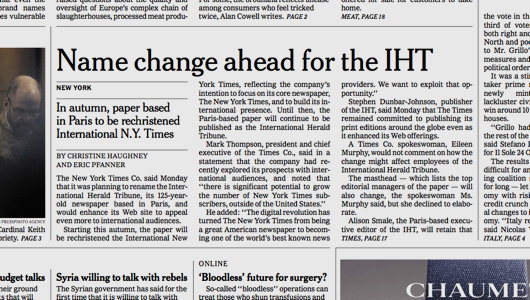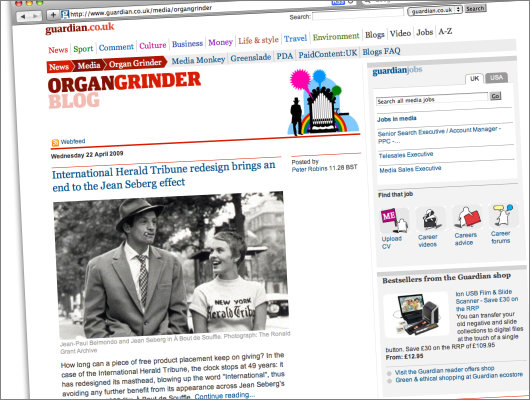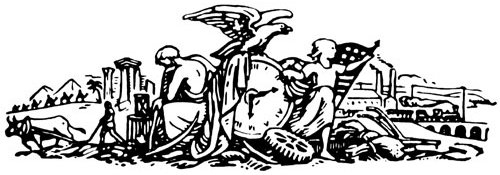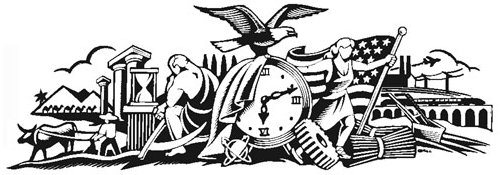Herald-Tribune
About Andrew Cusack
 Writer, web designer, etc.; born in New York; educated in Argentina, Scotland, and South Africa; now based in London.
Writer, web designer, etc.; born in New York; educated in Argentina, Scotland, and South Africa; now based in London. read more
News
Blogs
Reviews & Periodicals
Arts & Design
World
France
Mitteleuropa
Knickerbockers
Argentina
The Levant
Africa
Cape of Good Hope
Netherlands
Scandinavia
Québec
India
Muscovy
Germany
Academica
IHT, RIP
New York Times Kills Off the International Herald-Tribune

The New York Times Company, owners of the Paris-based International Herald-Tribune, announced recently that they are going to kill off the 126-year-old newspaper. I had predicted back in 2009 that this was precisely what would happen because of the aimless direction the IHT had taken since the New York Times became the sole owners of the title in 2002, after a long period of joint ownership with the Washington Post. The IHT will be merged into the worldwide operations of the Times this autumn and be rebranded as the International New York Times
 Hendrik Hertzberg of the New Yorker bids adieu to the Trib, remembering the first time he left the U.S. in 1960. Crain’s New York Business provides a brief overview of NYTCo’s decision. Margaret Sullivan, the Times’s ‘Public Editor’, reduces any appreciation for the Herald-Tribune as mere emotive romantic nostalgia. Nikki Usher mourns the IHT’s tendency to broaden the Times’s typically American editorial lens. Meanwhile, Ken Layne of The Awl is a bit frank about the decision to drop the Herald-Tribune for The International New York Times: “That’s an incredibly shitty name that makes no sense at all!”
Hendrik Hertzberg of the New Yorker bids adieu to the Trib, remembering the first time he left the U.S. in 1960. Crain’s New York Business provides a brief overview of NYTCo’s decision. Margaret Sullivan, the Times’s ‘Public Editor’, reduces any appreciation for the Herald-Tribune as mere emotive romantic nostalgia. Nikki Usher mourns the IHT’s tendency to broaden the Times’s typically American editorial lens. Meanwhile, Ken Layne of The Awl is a bit frank about the decision to drop the Herald-Tribune for The International New York Times: “That’s an incredibly shitty name that makes no sense at all!”
Homage to Jean Seberg
 One of the earnest stalwarts of the blog was wandering around the Metropolitan recently when he came upon this curious “multi-media art work” by Barbara Bloom entitled Homage to Seberg. Bloom is a photographer, designer, and “installation artist” who was the subject of her own show at the International Center of Photography last year. This work was created in 1981 and forms part of the temporary exhibition “The Pictures Generation” at the Metropolitan Museum of Art.
One of the earnest stalwarts of the blog was wandering around the Metropolitan recently when he came upon this curious “multi-media art work” by Barbara Bloom entitled Homage to Seberg. Bloom is a photographer, designer, and “installation artist” who was the subject of her own show at the International Center of Photography last year. This work was created in 1981 and forms part of the temporary exhibition “The Pictures Generation” at the Metropolitan Museum of Art.
The installation includes a copy of the Herald Tribune, the newspaper sold by Jean Seberg’s character in the 1960 Godard film À bout de souffle, resting one of the butterfly chairs so popular during the 1960s. Readers will remember Jean Seberg & the Trib from our post on the continued decline of the International Herald Tribune and the follow-up from the Guardian‘s media blog.
What I didn’t know was that Ms. Seberg was American, Iowa-born, and a supporter of the Black Panthers. Sadly, she died in Paris in 1979 of an overdose of barbiturates and alcohol in an incident the French authorities ruled a probable suicide. (more…)
IHT Follow-up

Writing about the latest changes over at the International Herald Tribune, the Guardian‘s media blog “Organgrinder” linked to our “remarkably comprehensive” post covering the subject in depth. I’m slightly embarrassed to say I’ve never seen any of Jean-Luc Godard’s films, something I will have to rectify through the DVD collection at the French Institute’s Haskell Library when I’m back in New York.
Meanwhile, Erik Zenhausern, the IHT’s former Operations Director for the Americas, corrects some errors on my part and gives us an inside look at NYT-IHT operations [boldface mine]:
Some things in the article may not be 100% accurate. The dingbat, along with the whole paper (it does mention the switch to Poynter type)was redesigned in 2002-2003.
Also, the New York Times does not own the print sites around the world where the IHT is printed. These are contract printers. Of course the entire supply chain is already set up so it will be easy to pump NYT lite throughout Europe and Asia and NYT doesn’t have the cost of maintaining these facilities.
I sat in on early strategy meetings when the NYT forced out the WP. Even in the first few months of owning the newspaper, many people at the NYT were ready to call the newspaper New York Times International. If it wasn’t for focus groups saying they thought anything that says “New York” on it won’t sell in europe.
While in the early days the tread lightly, heavier footsteps are coming. The IHT will definitely be folded into the NYT at some point.
The Continued Decline & Fall of the International Herald Tribune
The New York Times ‘tightens the leash’, shutting IHT website and redesigning newspaper as Times-lite; Herald-Trib loyalists cry foul

THE SAD DECLINE of one of the newspaper world’s most historic titles is continuing as the entire industry faces the challenges of the twenty-first century. The International Herald Tribune recently suffered a host of changes on the order of its proprietor, the New York Times, that have continued to assault the Paris-based newspaper’s individual identity. The paper’s website, iht.com, has been shut down and now redirects to a new portal on the New York Times‘s website, nytimes.com. Non-U.S. internet viewers are now automatically sent to the new portal — global.nytimes.com — upon accessing the Times website as well, but can switch to the U.S. edition at the click of a button. The rationalization for the move is centered on the New York Times Company’s attempts to boost online advertising revenue as print advertising and sales figures tumble. Furthermore, the actual print version of the Herald-Tribune has been redesigned, spurning the paper’s long design identity to make it look like a more light-weight version of the New York Times.
Herald-Tribune Drops Iconic ‘Dingbat’
Famous Emblem from 1886 is Dropped in Move to ‘Modernize’
 The International Herald Tribune has unceremoniously dumped its unique 142-year-old nameplate logo, affectionately known as the “dingbat”. The graphic made its first appearance in the New York Tribune on April 10, 1866. The Tribune later merged with the New York Herald to become the New York Herald Tribune. The Herald had previously founded a separate European edition based in Paris. While the New York newspaper died in 1967, its weekly New York supplement survives as New York magazine and the Paris edition became the International Herald Tribune, jointly owned by the Whitney family and the New York Times. The Whitneys sold their stake to the Washington Post, which in turn ran the paper in alliance with the Times until 2002, when the New York Times Company became the sole proprietor of the IHT.
The International Herald Tribune has unceremoniously dumped its unique 142-year-old nameplate logo, affectionately known as the “dingbat”. The graphic made its first appearance in the New York Tribune on April 10, 1866. The Tribune later merged with the New York Herald to become the New York Herald Tribune. The Herald had previously founded a separate European edition based in Paris. While the New York newspaper died in 1967, its weekly New York supplement survives as New York magazine and the Paris edition became the International Herald Tribune, jointly owned by the Whitney family and the New York Times. The Whitneys sold their stake to the Washington Post, which in turn ran the paper in alliance with the Times until 2002, when the New York Times Company became the sole proprietor of the IHT.
The Paris-based newspaper’s executive editor Michael Oreskes said he hoped that dropping the dingbat would make the front page “cleaner, more modern, more streamlined”. Vanessa Whittall, the Herald Tribune‘s communications manager, meanwhile said “by removing the traditional ‘dingbat’ graphic between Herald and Tribune we have created a more contemporary and concise presentation that is consistent with our digital platforms.”
The New York Times Company has been beset with problems in recent years, with both profits and circulation falling; one Manhattan outlet reported seeing an 80% drop in sales of the Sunday New York Times. Shareholders have claimed that the general downturn for newspapers has only been exacerbated by Arthur Ochs Sulzberger, Jr.’s poor management. The decline of the Times has been mirrored in the IHT, which it now markets as its international edition.
Under the Times‘s control, the IHT has been seen to become more of a newspaper for Americans abroad than an American newspaper for an international audience. The blogger of “Think!: The blog for readers of the International Herald Tribune” questioned the prominence the paper devotes to American stories: “How a piece about baseball in the Netherlands (where I lived for three years) got more play directly next to an article about a cyclone in Burma that has killed around 100,000 people is a little hard to follow.”

Above, the traditional nameplate. Below, the ‘modern, streamlined’ nameplate.

The decision to remove the dingbat certainly has its critics. Juan Antonio Giner, the founder of a media consulting group and blogger at Innovationsinnewspapers said the move was “not a big revolution or a smart strategic decision for a dying newspaper”. Mr. Giner compared the management’s decision to “play with such a traditional, magnificent, beautiful, well-done logo” as “like moving the chairs on a sinking Titanic”.

The original dingbat, above, with the most recent incarnation below.

In “The Paper: The Life and Death of The New York Herald Tribune”, the definitive history of the deceased journal, Richard Kluger described the dingbat:
“in the middle of the crudely drawn tableau is a clock reading twelve minutes past six – no one knows why (conceivably it was the moment of Horace Greeley’s birth); to the left, Father Time sits in brooding contemplation of antiquity, represented by the ruin of a Greek temple, a man and his ox plowing, a caravan of six camels passing before two pyramids, and an hourglass; to the right, a sort of Americanized Joan of Arc, arms outstretched beneath a backwards-billowing Old Glory, welcomes modernity in the form of a chugging railroad train, factories with smoking chimneys, an updated plow, and an industrial cogwheel (over which the incautious heroine is about to trip); atop the clock, ready to take off into the boundless American future, is an eagle – all for no extra cost.”
“It was a baroque snapshot of time arrested,” Mr. Kluger continued, “an allegorical hieroglyph of the newspaper’s function to render history on the run”.
The deputy managing editor Robert Marino said of the dingbat, “I’m kind of sorry to see it go, but that’s progress.” Many of the Herald Tribune‘s readers will remain unconvinced.
Dingbat Through the Ages

Newsdesigner.com has an interesting post enlightening us to the history of the ‘dingbat’, the vignette which can be found atop the International Herald Tribune.

The design first originated in the nameplate (also called, varyingly, the ‘masthead’, ‘banner’, or ‘flag’) of the New-York Tribune. The Tribune became the New York Herald Tribune, which my Aunt Naomi informs me was a very good newspaper while it lasted. The NYHT died in 1966, being merged into the ill-fated New York World Journal Tribune (aka the Widget) which only produced a few numbers before labor troubles killed it too.

The Herald Tribune, however, has two remnants which still exist today: the Paris edition (now the IHT) which continued under the auspices of the New York Times and the Washington Post, now solely owned by the Times; and New York magazine, which started out as a weekly supplement to the Herald Tribune.
Search
Instagram: @andcusack
Click here for my Instagram photos.Most Recent Posts
- Silver Jubilee November 21, 2024
- Articles of Note: 11 November 2024 November 11, 2024
- Why do you read? November 5, 2024
- India November 4, 2024
- The Lithe Efficiency of the Old Constitution November 4, 2024
Most Recent Comments
Book Wishlist
Monthly Archives
Categories


